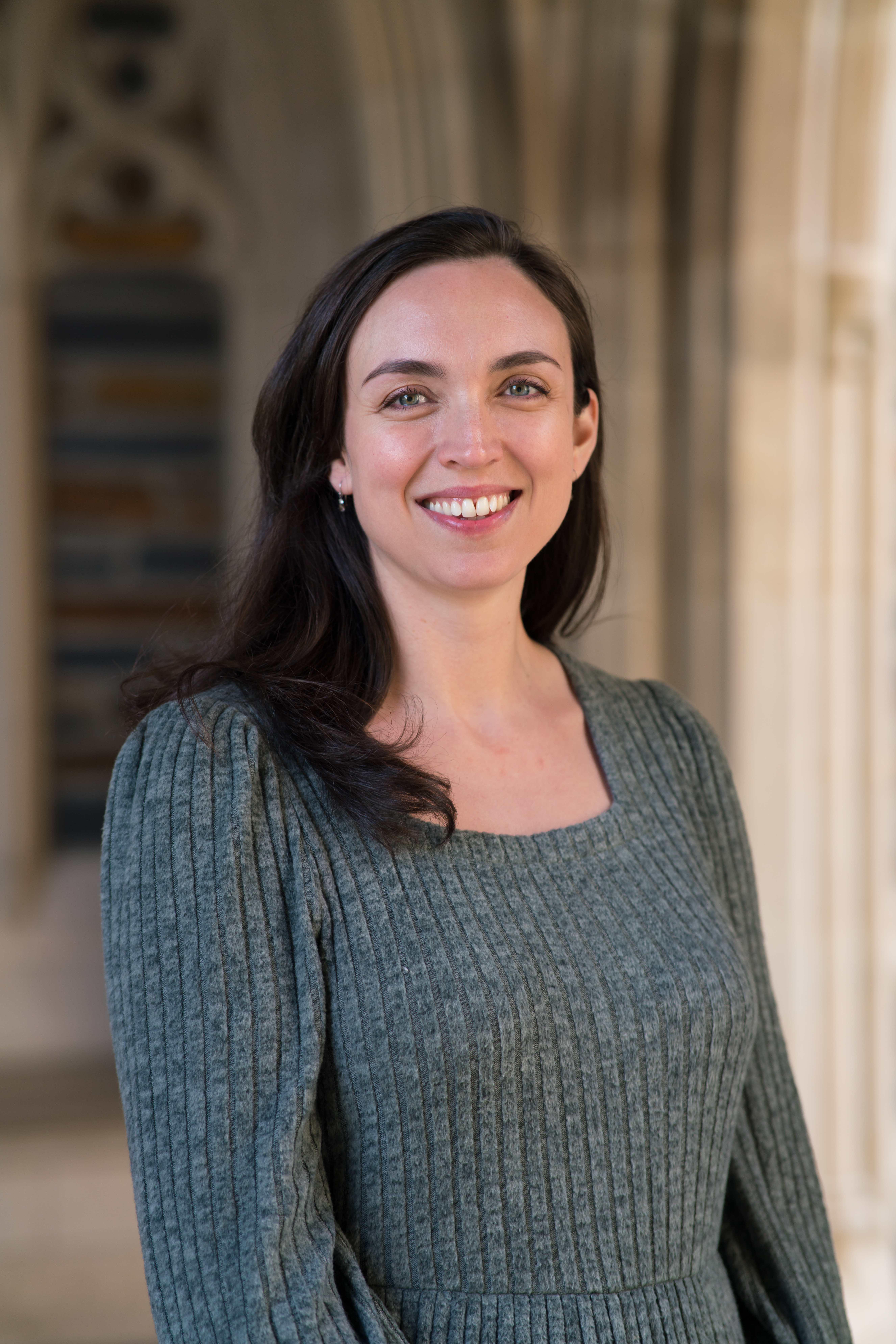Alumni Spotlight on Alex Garcia-Moreno, PhD
I recommend spending some time figuring out what success means to you, and to know that it’s ok if your definition of success looks different than that of your peers.
Alex Garcia-Moreno, PhD
Alex Garcia-Moreno is a CRS alum who completed her PhD in the lab of Dr. Danielle Maatouk. She is now a postdoc in Dr. Charlie Gersbach’s lab at Duke University, where she is researching Prader-Willi Syndrome.

Thesis mentor: Danielle Maatouk, PhD
Thesis title: "Uncovering chromatin-mediated regulatory mechanisms of mammalian sex determination"
What is your connection to the CRS community (mentor and position) and what is your current position?
I was a graduate student in Dr. Danielle Maatouk’s lab from 2013-2018 where I researched the epigenetic and cis-regulatory mechanisms that direct gonadal cells towards their ovarian or testicular fate. I am now a postdoc in Dr. Charlie Gersbach’s lab at Duke University.
Could you describe your current research/studies?
I currently research Prader-Willi Syndrome, a rare neurodevelopmental disease that affects children and currently has no cure. This disease is caused by a loss of function of various paternally expressed genes on chromosome 15. Individuals with PWS have an intact maternal copy of these genes, however they are epigenetically silenced through a developmental process called imprinting. The goal of my project is to use CRISPR/dCas9 epigenome editing to alter the chromatin landscape at this locus and activate maternal PWS genes. Our hope is that activation of these imprinted maternal genes will rescue the PWS phenotype in a mouse model of PWS.
What aspect(s) of CRS did you find most valuable?
I found a lot of value being part of a tight knit community with shared research goals and interests. I particularly found the weekly reproductive research update seminar series very helpful. These seminars were a great way for trainees to practice presenting and to receive guidance and input on their projects from both faculty and other trainees within CRS. I also learned how to present my research in an oral and poster format at the CRS mini-symposium, which set me up for successful presentations at larger conferences later in my career.
What has been the most valuable aspect to your training as a reproductive scientist in CRS?
The most valuable aspect to my training as a scientist during my time in CRS was the mentorship I received from my mentor Dr. Maatouk. I would not be the scientist I am today without the time, care, and dedication that she extended to me as a new graduate student, and I will always be grateful to have joined her lab.
What would you recommend to junior scientists in order for them succeed in their scientific careers?
I recommend spending some time figuring out what success means to you, and to know that it’s ok if your definition of success looks different than that of your peers. For example, success to some may look like being a PI and publishing in top-tier journals, while for others it may look like teaching science at a primarily undergraduate institute or doing science at any capacity while prioritizing other aspects of your life. Keep this in mind as you move through your career, and try to take steps that will bring you closer to your personal goal such as taking career development workshops, attending conferences, etc. My other recommendation is to make meaningful connections with faculty members outside of your PI. Mentorship extends beyond graduate school and can have a major impact in your career moving forward. I am enormously grateful to all the support that my committee members within CRS (Debu Chakravarti and Teresa Woodruff) provided me during my time as a graduate student and for all the recommendation letters they’ve written for me since then.
What do you think will be the next big contribution in the reproductive biology field?
I think we will see advances in generating iPSC-derived ovarian cells. My hope is that these advances will not only increase our understanding of oocyte biology as it relates to fertility, but that we can use this model to better understand how oocytes interact with their surrounding cells within a follicle, and how this synergy contributes to the overall health of the ovary, which in turn, contributes to woman’s health.
Do you have any notable stories from your time in CRS?
I remember the secret Santa games very fondly! They were organized by Julie Kim’s lab every year and were always a lot of fun. I remember having to come up with elaborate clues to leave my giftee over the course of several weeks, and on the flipside, having to decipher the clues that I received to figure out who my secret Santa was. It was a great way to get to know people in the department.